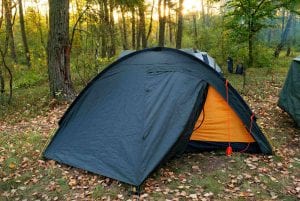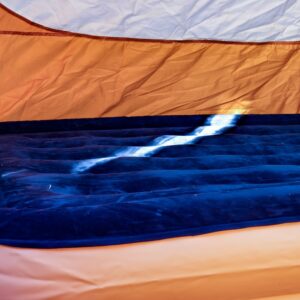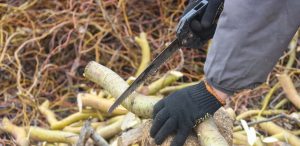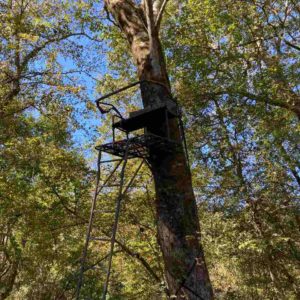When we explore the great outdoors, we experience it with all our senses. What we can see is, of course, important but so much of the pleasure also comes from what we can hear and smell, as well as the sensation of touching a tree or a rock, or even tasting rainwater on our lips.
Humans weren’t designed to live in polluted, concrete jungles, so when we immerse ourselves in a natural landscape, we can feel our body relax into where it’s meant to be. And for those who enjoy the Japanese art of shinrin-yoku, there’s nowhere more naturally sensual and health-giving than the forest.
Shinrin-yoku means ‘forest bath’. It’s a recent phase with ancient origins – emerging from Japan in the 1980s, but based on Shinto and Buddhist practices – and it really just describes something that humans have done unconsciously for millennia. In simple terms, the idea is to walk slowly through a forest; watching everything you can see in detail; slowly breathing in the woodland scents; listening to the birds, the wind and the rustling of leaves; and benefiting from the mild oxygen boost from the trees.
It combines elements of mindfulness and meditation with the undisputed benefits of being out and about in the great outdoors, revelling in nature’s timeless rhythms. It’s sometimes described as ‘enabling you to return to your senses’.
The phrase shinrin-yoku was originally championed by the Japanese Government, who saw it as one way of alleviating a public health crisis created by high levels of workplace stress.
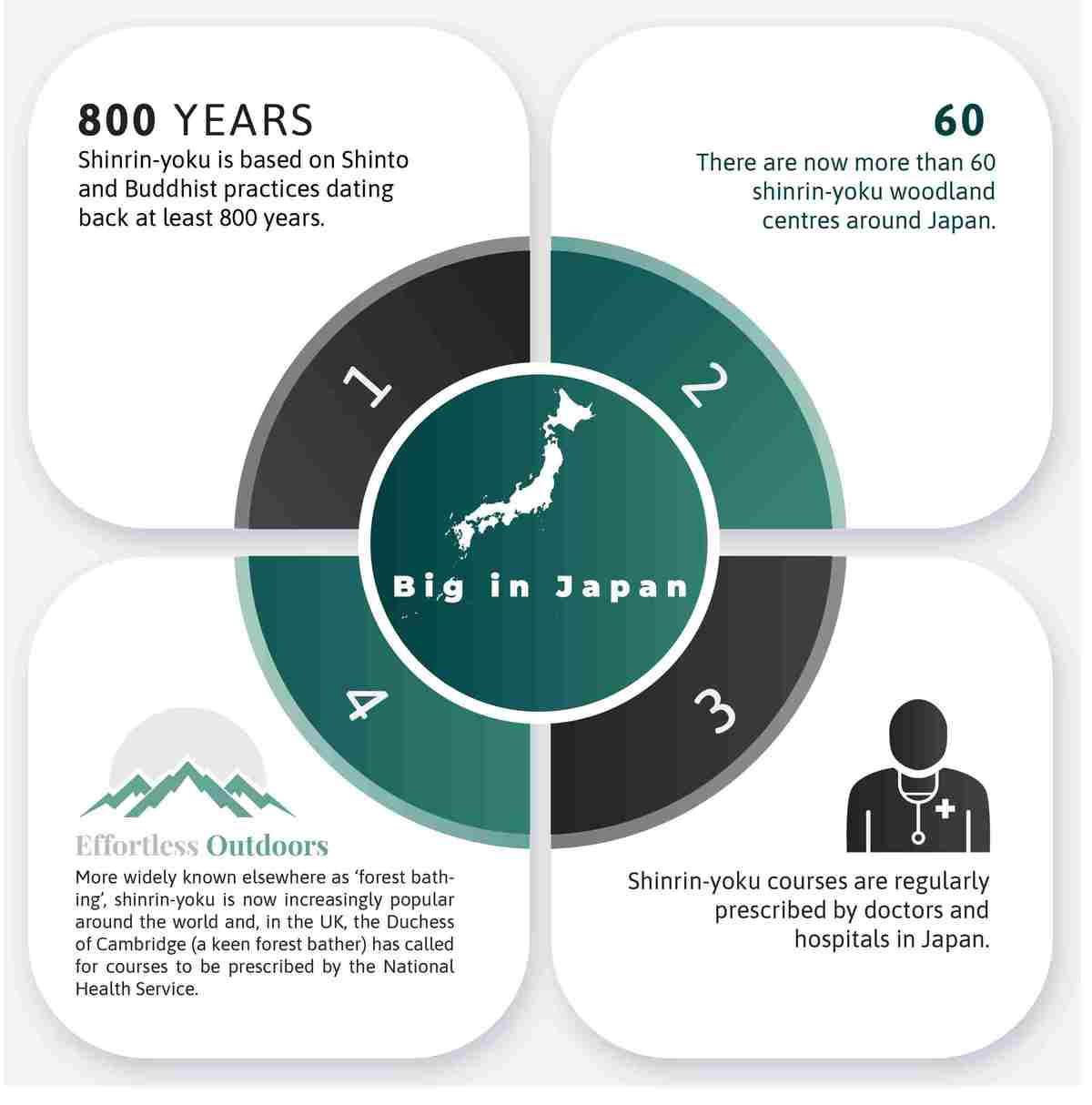
This led to extensive scientific research into demonstrating its health benefits. For instance, shinrin-yoku has been shown to reduce high blood pressure, curb anxiety levels and help with depression (Source: Global Wellness Institute/National Taiwan University) and even boost anti-cancer properties (Source: Global Wellness Institute/Nippon Medical School).
Little surprise then that, as forest bathing has become increasingly popular across the world, many regard it not just as an invigorating recreational hobby but a valuable physical and mental health therapy. Japan now has several specially designated shinrin-yoku forests. And globally there’s a network of forest therapy guides who can help you get the most out of an experience.
Our ancestors used to go forest bathing frequently, they just didn’t call it that. But now, most of us spend so much time in unnatural indoor settings that your body may well be silently craving the shinrin-yoku experience.
Why Forest Bathing Is Good For You
- It allows your mind and body to escape from unnatural urban environments and reconnect with the natural world.
- Slowing down and breathing deeply enables you to relax.
- You may benefit from increased oxygen levels and other natural chemicals released by trees that can help to boost our immune levels (Source: The Forest Bathing Institute/Dr Qing Li/Nippon Medical School).
- Sensual immersion in the sights, sounds and smells of the forest reduces anxiety and tension (Source: Global Wellness Institute/National Taiwan University).
- Research suggests that people relax best when they are surrounded by blue and green (Source: Color: Messages and Meanings by Louise Eiseman 2006).
How to Prepare
You can forest bathe alone or as a group but, once you are in the forest, you should all remain quiet so that you can concentrate on immersing yourself in the experience. Most forest bathing advocates recommend setting aside two hours for the walk, which includes several stops. The first few times you try forest bathing, you might want to go out for a shorter period, then build up as you become more used to it.
Before you set off, make sure you wear comfortable clothes and turn your phone off (or even better, leave it at home). Pack a bag with essential items.
Choose a forest location that offers as much diversity as possible. Perhaps your route will offer the contrast of a bright clearing filled with flowers, variations in the mix of trees, or other features such as a rocky outcrop or a gurgling stream. Moving through parts of the forest that offer different sensory experiences will make it all the more satisfying.
Pause at the edge of the forest before you walk in. Take slow deep breaths as you take a look at the trees, readying yourself to enter.
The Walk Begins…
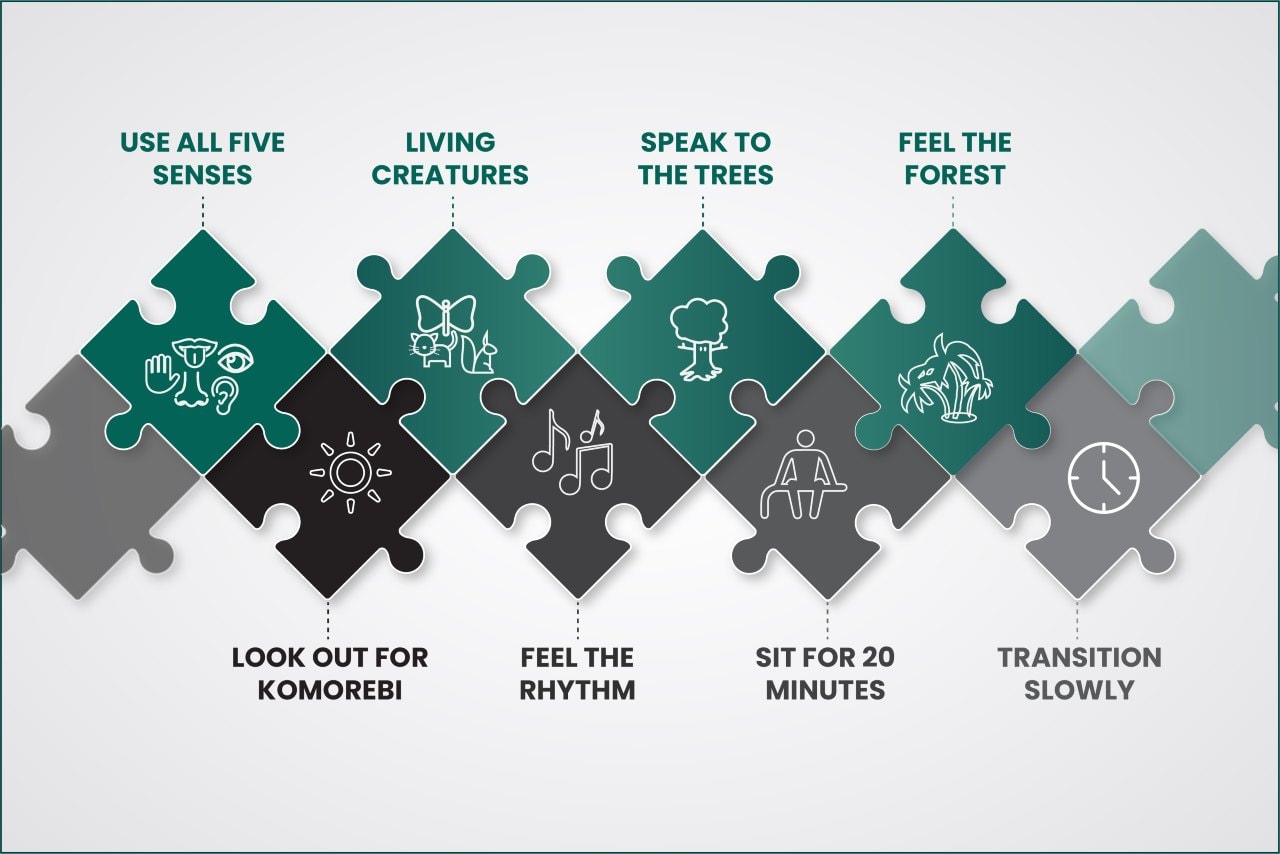
Use All Five Senses
Begin walking slowly through the forest and keep breathing deeply. Look at the trees, the leaves, the forest floor and everything else you encounter in much more detail than you would normally. Take pleasure in the details of nature.
Pause. What can you smell? The heady scents of pine or birch? The musty decay of leaves? The fragrance of rain on warm earth, known as petrichor? Whatever aromas you detect, breathe them in deep.
Keep your eyes open most of the time (particularly when you are walking!). This allows your mind and body to drink in as many natural sensations as possible. But you can also close them at other times to focus on other sensations.
Move onwards and then pause once more when it feels right. Focus on what you can hear. Birdsong, perhaps; the breeze in the treetops or the rustling of leaves. And explore with touch as well. Run your fingers across the bark of an old tree, hold a pinecone in your palm, cradle a wildflower in your fingers.
The most difficult sense to involve is taste, but look out for things you may be able to eat, such as edible berries. If you’re lucky enough to be able to do this, think carefully about what you can taste and savour it. A wild blackberry plucked during forest bathing tastes very different from one you might buy from a supermarket.
Important
If you have any doubt at all about the safety of something you may be able to eat – don’t touch it. And be particularly careful with fungi – even experts have died after mistakenly consuming poisonous mushrooms they thought were safe.
Look Out for komorebi
Throughout your walk, observe the changing shape and radiance of the sunlight through the leaves of the trees (what the Japanese call komorebi).
Observe Living Creatures
Look out for wildlife. Whatever you see – insects, birds, rabbits, squirrels, deer – look closely at the way they move and how comfortable they are in their surroundings. Think about what you have in common as living creatures. Think about the trees breathing in and out, sap coursing through their trunks and branches.
Feel the Rhythm
Feel your feet planted firmly on the forest floor. Observe the gentle rhythms of your arms and legs as you move. Listen to the sound of your breathing synchronising with the timeless peacefulness of woodland life.
Speak to the Trees
If you’re feeling brave, trying speaking to the forest. Focus on a tree, a toadstool or a scurrying squirrel. Tell them what you observe. Highlight the details you would never normally have noticed.
Sit for 20 Minutes
Find a comfortable spot to sit on the ground, or perhaps an old log or boulder. Quietly observe your surroundings for a full 20 minutes or more. If the space works for you, make a note of where it is and return there each time you visit the forest.
Feel the Forest Within You
Resume gentle walking until you reach the end of your route at the edge of the forest. Keep breathing deeply. After a while, you may well feel as if the forest lives within you. Indeed, it does!
The Threshold of Incorporation
When you emerge from the forest, don’t rush straight back into your other life. Japanese forest bathing sessions are often concluded with a tea ceremony, so unpack a drink and maybe a snack and enjoy them slowly. If you are with other people, this is the moment to start quietly discussing what you experienced. You may also want to write down a few notes describing your experience. Known as ‘the threshold of incorporation’, these moments are not part of forest bathing itself, simply a gentle and pleasant way to transition back towards the harsher environment of the developed world.
How Frequently Should You Go Forest Bathing?
Forest bathing is like most forms of therapy, and any form of exercise. There is no long-term benefit from doing it once or twice. If you find that it works for you, create the time and space to go forest bathing regularly – ideally, once a week. And if your preferred forest can get busy, choose a time (such as early morning) when you can find the solitude and peace to immerse yourself fully in the experience.
The more you go forest bathing, the more you will feel the benefits – both at the time and in terms of your overall health and wellbeing. You will also experience additional nuances of revelation as you observe the changing seasons.
Expert Advice
What you should do
- Turn your phone (and any other technological distractions) off.
- Breathe deeply and walk slowly.
- Pause regularly to focus on smelling, touching and listening to the forest.
- Feel the connection with the trees. You are inhaling the oxygen they create, and they are absorbing the carbon dioxide you exhale.
- Observe the gentle changes in the komorebi – the sunlight through the leaves of the trees.
- Speak to the forest. Describe the things you can see that you had never noticed before.
- Find a place to sit and observe your immediate surroundings for at least 20 minutes.
- Listen to your body. Feel the rhythm of your breathing merge into the forest soundscape.
- Build up to two hours per forest bathing session and make it a regular feature of your lifestyle.
What NOT to do
- Don’t take a phone call or check your emails.
- Don’t listen to music.
- If you’re with other people, don’t talk to each other apart from the most basic interactions required to keep the expedition on track.
- Don’t take photographs. It will distract you because you will start thinking of compositions rather than simply immersing yourself in the details you observe.
- Don’t use binoculars or microscopes – keep it natural.
- Don’t start thinking about everyday life issues.
What you should do
- Turn your phone (and any other technological distractions) off.
- Breathe deeply and walk slowly.
- Observe everything before you in detail.
- Pause regularly to focus on smelling, touching and listening to the forest.
- Feel the connection with the trees. You are inhaling the oxygen they create, and they are absorbing the carbon dioxide you exhale.
- Observe the gentle changes in the komorebi – the sunlight through the leaves of the trees.
- Speak to the forest. Describe the things you can see that you had never noticed before.
- Find a place to sit and observe your immediate surroundings for at least 20 minutes.
- Listen to your body. Feel the rhythm of your breathing and your heartbeat merge into the forest soundscape, just like the wildlife you may catch glimpses of.
- Build up to two hours per forest bathing session and make it a regular feature of your lifestyle.
- When you leave the forest, take time out before you plunge yourself back into your other life.
What NOT to do
- Don’t take a phone call or check your emails.
- Don’t listen to music.
- If you’re with other people, don’t talk to each other apart from the most basic interactions required to keep the expedition on track.
- Don’t take photographs. It will distract you because you will start thinking of compositions rather than simply immersing yourself in the details you observe.
- Don’t use binoculars or microscopes – keep it natural.
- Don’t start thinking about everyday life issues.
Good Things to Take With You
- A comfortable lightweight rucksack.
- A water bottle.
- Sturdy walking boots that are appropriate for the conditions.
- Extra clothing in case the weather turns colder.
- Sunblock if it’s hot and sunny; lightweight waterproofs if it may rain.
- Something you can sit on if the ground is wet.
- A drink and a snack to enjoy at the end of the session.
- A notebook and pen.
- A simple first aid kit including plasters, dressings and antiseptic cream.
And if you’re travelling alone, make sure that at least one person knows exactly where you’re going and how long you’re likely to be away for.
What If You Can’t Get to a Forest?
Not everyone has access to a large forest where there is space for you (or your group) to become sensually immersed away from the distractions of other people. However, the good news is that similar principles apply to walking through any deserted natural environment, such as fields, hills and beaches. Try to visit when the area will be as quiet as possible and do all the things you would do if you were forest bathing.
If you really can’t get to a natural space then there are various businesses and products that try to help you create a sense of natural space indoors, like these guys in Denmark who will try to bring the forest into your office (back when we went to the office, of course…) or these guys who sell forest-themed aromatherapy diffusers.

